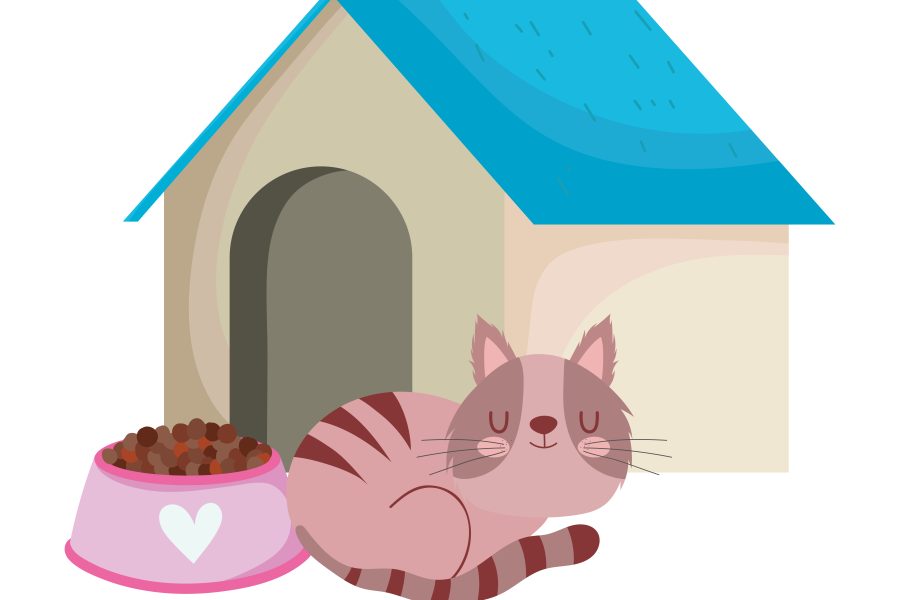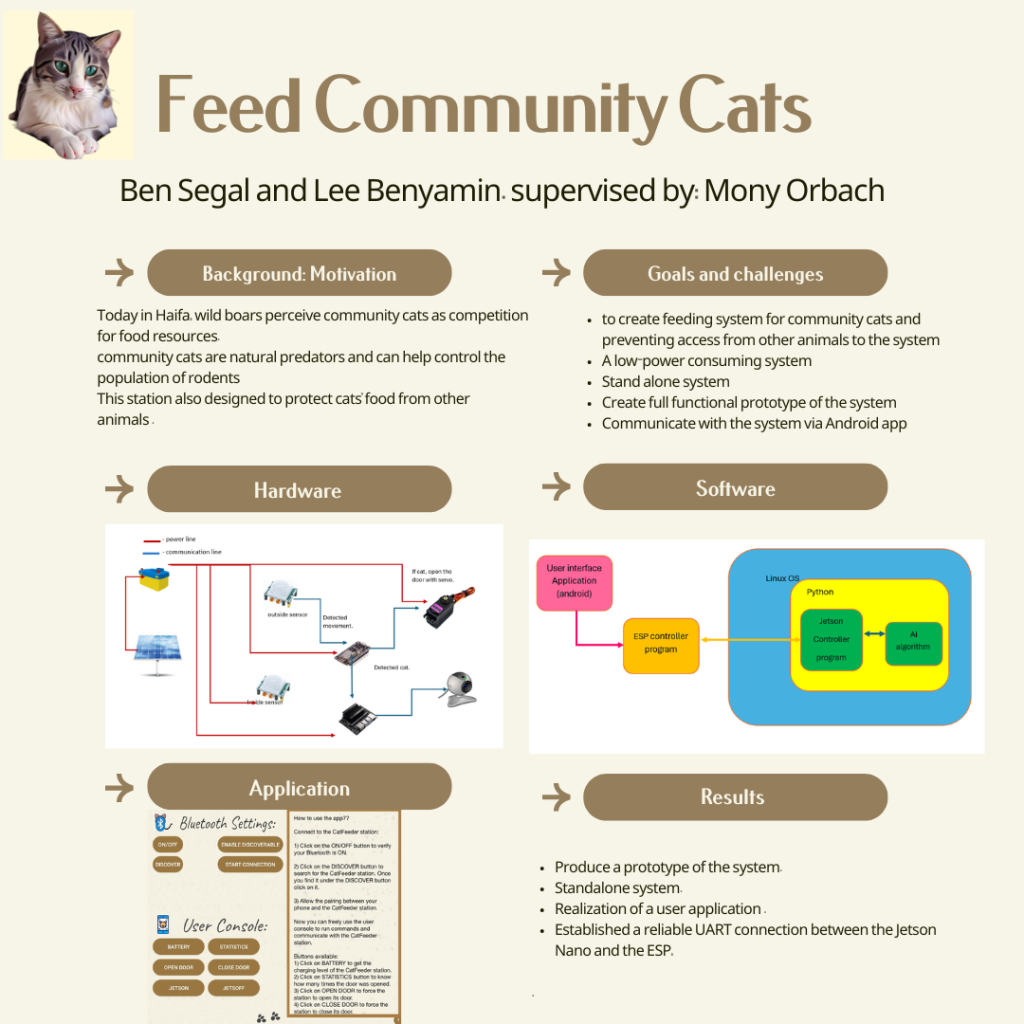Creation of a low-power and efficient feeding system that designed for community cats, while ensuring that other wildlife can't access the food.

Today in Haifa, wild boars perceive community cats as competition for food resources.
community cats are natural predators and can help control the population of rodents like rats and mice in urban areas. This can help reduce the spread of diseases that rodents carry.
A cat feeder station can ensure that cats have access to food which also designed to protect the food from other animals.
The system’s primary function is to open the station’s door for the cat so it can eat without disturbance.
another goal is to develop a self-sustaining system with minimal power consumption.
The primary goal of this project is to bring together several hardware devices, establish connections among them, and set up the necessary software infrastructure for the system.
The system operates as follows: A system controller (ESP) manages commands and communicates with the smart computer (Jetson Nano), which runs the identification algorithm. When the outdoor system detects movement, the ESP notifies the Jetson and inquires whether the object is a cat. The Jetson then activates the camera, analyzes the object using the cat detection algorithm, and reports back to the ESP whether it is a cat or not. If a cat is detected, the ESP triggers the door to open, and it remains open until the internal sensor detects that there is no more movement inside the station.
In addition, we have an application that communicates with the ESP via Bluetooth, allowing users to perform various actions such as monitoring the battery level, tracking the number of door openings and closings, remotely opening and closing the door, and turning the Jetson on and off.


